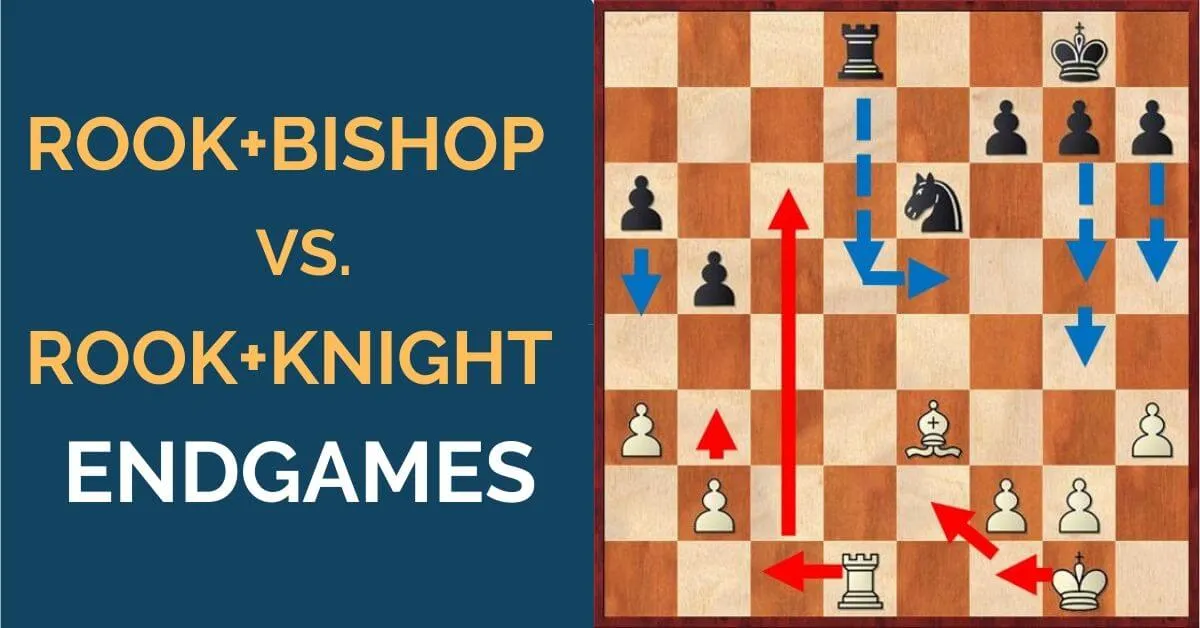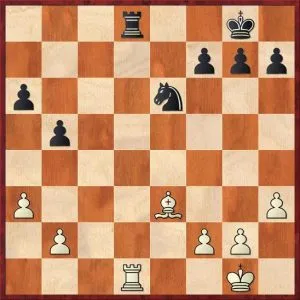Rook and Bishop vs. Rook and Knight Endgames

Endgames: Which minor piece is better, the bishop or the knight? Rook and Bishop or Rook and Knight? This is an endless debate; from a very early age, we tend to choose our favorite, a choice that’s not necessarily based on facts, but rather on feelings. Our preferences may change with the years and we may even play better with one than the other, but what’s important to understand is that things are never either black or white. In this case, they are rather grey.
There is no clear recipe and we cannot say that one is always better than the other. Rather than that, we have to pay attention to the details on the board. Each can be superior to the other; it all depends on what’s going on on the board. Here are a few guidelines that can help you assess this correctly:
- The situation in the center. This is perhaps one of the most important features of the position that you have to take into account when deciding which minor piece to keep. The bishop is a long-distance piece; it needs open diagonals in order to become dangerous. On the other hand, the knight is a short-range piece that needs support from the pawns in order to secure a nice, central square. We call these outposts. These considerations lead to a simple conclusion: bishops are usually better in positions with an open center, while knights work better when the center is closed.
- Since bishops are long-range pieces, they can also be brought easily from one flank to the other, depending on where it is needed. This is why the bishop usually dominates the knight when there are pawns on both wings.
Rook and Bishop vs. Rook and Knight Endgames – Essence
In this article, we are going to take a look at some rook and minor pieces endgames where the bishop is superior to the knight and see the ideas Grandmasters use in order to make the most of this advantage.
For this, we have chosen the following position that appeared in the game between Artur Jussupow and Vishwanathan Anand played in the famous Linares tournament:

Jussupow, A – Anand, V, Linares 1992
White to play
The diagrammed position is objectively equal and black has just offered the trade of rooks. If white accepts it, the game will probably be an easy draw. As black will centralize his king and eventually improve the position of his knight. With the rooks still on the board, black should also be able to make a draw. But, things should be slightly more difficult for him. There are two reasons for that:
- Black’s queenside structure is slightly weak and, by keeping the rook, white makes sure that he will be able to put pressure on it. Note that the bishop does a great job defending the black’s rook entrance on the second rank. Hence, it will not be easy for black to look for counterplay
- Secondly, the bishop cooperates very well with the rook in this case. The center is open and the knight has no good outposts, which means that it cannot come to the help of the queenside pawns easily. On the contrary, the rook and the bishop will both be able to put pressure on black pawns.
Conclusion
Taking this into consideration when it comes to endgames, it is now easy to come up with a good plan for white. The first move is, of course, Rc1! The idea is to get to c6 and attack the weakness on a6. If black defends it passively with the rook, then the king can come into play and decide the game. If the pawn advances, then the bishop will have a clear target too. Of course, all the actions will be supported by the white monarch.
We also recommend reviewing Chess: Is it a Sport?, Irregular Exchanges and The Opening Principles According to Dr. Tarrasch.
See how white put this into practice below:










Comments: